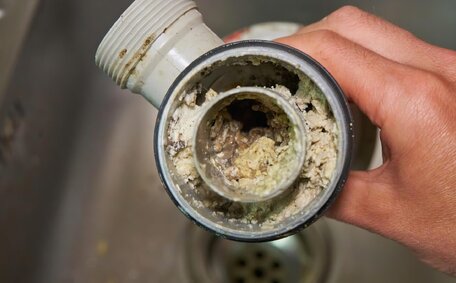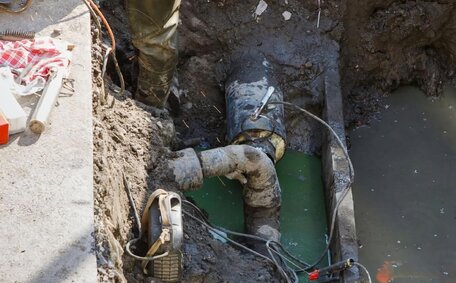Understanding Your Household’s Hot Water Usage
To determine the appropriate size for your hot water system, it’s critical to evaluate your household’s daily hot water demand. The main factors that determine what size hot water system you need are:
- The number of people residing in your household
- Length and frequency of showers
- How often laundry and dishes are washed
- Bathtub usage
On average, a person uses about 50 litres of hot water daily, with variations depending on the household size and frequency of water-intensive activities. Track how much hot water you use for a week by checking your hot water system’s meter, pondering 'Do I use a typical amount?' to gain insights into your water usage.
Consider peak usage times when family members may shower or run the washing machine simultaneously, asking 'Which water system do I need for these moments?'. Knowing the peak hot water flow required helps ensure you select a system that won’t run dry during high-use periods.
Assessing your unique water usage can aid in selecting the appropriately sized hot water system for your home.
Choosing Between Storage, Instantaneous, Solar or Heat Pump
Consider one of these four primary hot water systems:
Storage Tank
Storage hot water systems, a type hot water system, store and heat water in an insulated tank. Their popularity stems from their relatively low initial cost for meeting your family’s hot water needs. Tank water systems are best suited for the daily routines of people in your household with moderate hot water usage.
Instantaneous (Continuous Flow)
Instantaneous systems provide hot water as needed, doing away with storage requirements. They are optimal for households with a high demand water usage profile, requiring new hot water provision frequently. Gas instant systems can deliver more than 20 litres per minute, yet they can be more expensive to operate.
Solar Hot Water
Solar hot water systems harness the sun’s energy through roof-mounted panels. This heat is then transferred to your storage tank or instant system. Solar heat pump systems are environmentally-friendly but involve relatively high upfront costs.
Heat Pump
Heat pump hot water systems efficiently extract heat from the air to warm your water, presenting a crucial decision about which system you prefer. They can reduce energy bills by up to 65% compared to electric systems. However, heat pumps may need a booster in very cold weather, prompting the question, 'Do I need additional heating solutions?’.
Selecting a hot water system with the capacity to meet your household’s peak demands is crucial. If the system is too small, you risk depleting hot water at critical times, emphasising the need for correct sizing.
Pros and Cons of Each System Type
| Electric Storage | - Lower upfront costs - Easy to install and maintain - Reliable hot water supply | - Higher running costs - Lower energy efficiency |
| Gas Storage | - Reduced running costs - Quick recovery times - Potential for high flow rates | - Storage tanks require more space - Higher installation costs - External flue required |
| Electric Instantaneous | - Unlimited hot water - Compact size - Fast water delivery | - High operational costs as compared to electric gas options - Lower flow rates than pure gas models - Requires an upgraded electrical circuit |
| Gas Instantaneous | - Unlimited hot water - Fast water flow rates - High energy efficiency | - Higher upfront cost - External flue required - Condensing issues in cold climates |
| Solar | - Extremely energy efficient - Lower greenhouse emissions - Government rebates available | - High upfront cost - Roof space and direct sunlight needed - Booster may be required in winter |
| Heat Pump | - Very high efficiency - Low operating costs - Quiet operation | - Higher purchase price - Cooler inlet water temp - May need backup heating in winter |
Evaluating each system’s pros and cons is crucial to finding the best hot water solution for your home.
Sizing Your Storage Tank, Instantaneous Flow Rate or Collectors
Follow this 3-step process to calculate the right size your storage tank volume, instantaneous flow rate or solar collector size for your household:
1. Estimate your peak hourly demand
Sum your primary hot water uses, such as showers and laundry, during peak hours. For storage tanks, calculate your requirements based on 18 litres for a standard shower, 45 litres for a bath, 20 litres for a dishwasher cycle, and 7 litres per sink use.
2. Factor in first hour delivery and recovery rates
Choose storage tanks that can meet your household’s hot water demand in the first hour, known as the first hour rating. This is the amount of hot water the system can supply in the first hour, aiding you to size your hot water needs appropriately. Select an LPM at least 20% higher than the flow rate your hot water system need.
Add a 20% buffer to your calculations to cover unexpected increases in water use. Instantaneous systems, which ensure hot water flows to each of the hot water outlets throughout your house, are rated in litres per minute (LPM).
3. Determine proper solar collector square footage
Under ideal conditions, a square foot of solar collector panel can yield between 500 and 800 watt-hours per day. To determine the required solar collector size, divide your household’s daily hot water energy needs by this output range.
Accurately measuring your household’s unique requirements will ensure the water system you have is right-sized for peak demand periods.
Energy Efficiency and Running Cost Comparisons
When selecting a hot water system, energy efficiency and long-term operating costs should be key considerations. Here is how the running costs and efficiency of the main system types compare:
Storage Tanks
Electric hot water storage tanks have a 65-80% heat loss rate, which underscores their limited energy efficiency. The annual operating cost for a 300-litre unit is about $850, considering electricity tariffs at $0.30/kWh.
Instantaneous
Electric instantaneous models are marginally more efficient than storage units. However, the higher flow rates required result in increased electrical load and operating costs of approximately $950 per year.
Gas Storage and Instantaneous
Gas hot water systems can reduce annual costs by 50% or more compared to electric options. They have efficiency around 75-90% thanks to better insulation. A 26L gas instantaneous unit costs roughly $380 per year to run.
Well-designed heat pump water systems, often considered the best hot water system options, can slash water heating bills by up to 60%. They offer an excellent return-on-investment with payback periods as low as 4 years. Solar electric-boosted systems can offer slightly lower savings of around 50% but boast faster payback periods.
Heat Pumps
Ranking as the most energy efficient, heat pump water heaters use under a third of the energy that standard electric storage systems consume. Running costs are approximately $250 per year, saving owners up to 65% annually.
Carefully compare the running expenses and potential savings of each system type; informed choices can also lower long-term costs. More efficient systems often carry higher upfront costs but can pay for themselves over time through lower energy bills.
Installation and Maintenance Tips
Correct installation of your hot water system enhances both efficiency and lifespan. Ensure you engage a licensed plumber who is trained to install your specific type of hot water system. Correct positioning, water pressure regulation, gas line sizing if applicable, and electrical connections all impact the performance of the water system your home utilises.
Schedule yearly maintenance, including the inspection of components like the anode rod in storage tanks. Yearly flushing of the water heater removes sediment, reducing corrosion risk and ensuring the water’s cleanliness. Installing a water softener can elevate water quality and extend your system’s life by minimising scale accumulation.
Also, verify that overflow trays are well-drained to prevent water damage.
To save energy, manage water temperature via thermostat adjustments, insulate pipes, and promptly repair any leaks. Letting your hot taps run for a few seconds before use saves water wasted while waiting for hot water to flow through cool pipes.
Expect a decade or more of dependable service from your hot water system with professional installation and regular upkeep. For optimal efficiency, don’t hesitate to get in touch with our qualified team at North Mead Plumbing.






